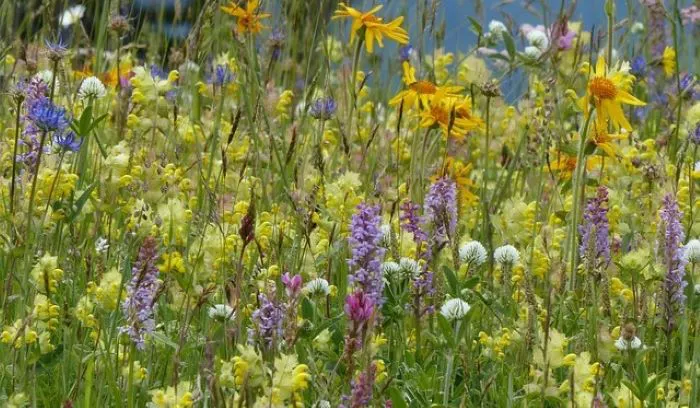Planting wildflowers for bees is an essential step in supporting pollinator populations and promoting biodiversity. Bees play a crucial role in the ecosystem by pollinating many plants, including food crops. By creating a bee-friendly garden filled with wildflowers, you can provide a vital habitat for these important insects. This article offers a detailed guide on how to plant wildflowers specifically to attract and support bees.
Understanding the Importance of Bees
Bees are among the most efficient pollinators. They help fertilize plants by transferring pollen from one flower to another. This process is essential for the reproduction of many flowering plants. Unfortunately, bee populations are declining due to habitat loss, pesticide use, and climate change. By planting wildflowers, you can contribute to their survival and create a sustainable environment.
Choosing the Right Wildflower Species
Selecting the right wildflower species is crucial for attracting bees. Different bee species are attracted to various types of flowers. It is essential to choose native wildflowers, as they are adapted to the local climate and soil conditions. Native plants also provide the best food sources for local bee populations.
When selecting wildflower seeds, consider the following factors:
Blooming Periods: Choose a variety of flowers that bloom at different times throughout the growing season. This ensures that bees have a continuous food source from spring to fall.
Flower Shapes and Colors: Bees are attracted to brightly colored flowers, especially blue, purple, and yellow. Different bee species prefer different flower shapes. Some bees are better suited to tubular flowers, while others prefer flat, open blooms.
Local Ecosystem: Research which wildflowers are native to your area. Local extension services or native plant societies can provide valuable information on the best species to plant.
Preparing the Planting Site
Once you have selected your wildflower seeds, it is time to prepare the planting site. Choose a location that receives full sun for at least six hours a day. Bees are more active in sunny areas, making them ideal for wildflower gardens.
Follow these steps to prepare the site:
Clear the Area: Remove any grass, weeds, or debris from the planting area. This will help prevent competition for nutrients and water.
Soil Preparation: Loosen the soil to a depth of about 12 inches. You can use a shovel or a garden fork for this task. If the soil is compacted, it may hinder root growth.
Soil Testing: Consider testing the soil to determine its pH and nutrient levels. Most wildflowers prefer slightly acidic to neutral soil (pH 6.0 to 7.0). Amend the soil as needed with organic matter, such as compost, to improve fertility and drainage.
Sowing the Seeds
When it comes to sowing wildflower seeds, timing is essential. The best time to plant wildflower seeds is in the spring or fall, depending on your climate. Fall planting allows seeds to undergo natural stratification, which can improve germination rates in the spring.
Follow these steps for sowing:
Seed Distribution: Scatter the seeds evenly over the prepared soil. For larger areas, you can mix the seeds with sand to help distribute them more evenly.
Seed Depth: Lightly rake the soil to cover the seeds with a thin layer of soil. Most wildflower seeds need light to germinate, so do not bury them too deeply.
Watering: After sowing, gently water the area to settle the soil around the seeds. Keep the soil consistently moist until the seeds germinate.
Creating a Bee-Friendly Environment
To attract bees to your wildflower garden, create a welcoming environment. Consider the following tips:
Diversity: Plant a diverse mix of wildflowers. This not only attracts different bee species but also enhances the overall beauty of the garden.
Avoid Pesticides: Pesticides can harm bees and other beneficial insects. If pest control is necessary, opt for organic methods or use targeted treatments that are less harmful to pollinators.
Provide Shelter: Bees need places to nest. Leave some areas of bare soil for ground-nesting bees. You can also create bee hotels using bundles of hollow stems or wood blocks with drilled holes for cavity-nesting bees.
Maintenance and Care
After planting, regular maintenance is essential to ensure the success of your wildflower garden. Follow these guidelines:
Watering: Water the garden during dry spells, especially during the first growing season. Established wildflowers are generally drought-tolerant, but young plants need consistent moisture.
Weeding: Keep the area free of invasive weeds that can compete with your wildflowers. Hand-pulling is often the best method to remove weeds without harming the wildflowers.
Monitoring: Observe your garden for bee activity. Different species may visit at various times. Take note of which flowers attract the most bees, as this can help you make future planting decisions.
Supporting Bee Populations Year-Round
To further support bee populations, consider implementing these practices:
Leave Some Areas Untouched: Allow some areas of your garden to grow wild. This provides additional habitat for bees and other wildlife.
Plant Additional Native Plants: In addition to wildflowers, consider planting native shrubs and trees that provide food and shelter for bees.
Educate Others: Share your knowledge about the importance of bees and how to create bee-friendly gardens. Encourage friends and neighbors to plant wildflowers and support local pollinator populations.
Conclusion
Planting wildflowers for bees is a meaningful way to contribute to the health of our ecosystems. By selecting the right species, preparing the planting site, and maintaining a bee-friendly environment, you can create a vibrant garden that supports these essential pollinators. Your efforts will not only enhance the beauty of your landscape but also play a crucial role in sustaining bee populations for future generations. Enjoy the process of planting and watching your wildflowers thrive while providing a haven for bees.


